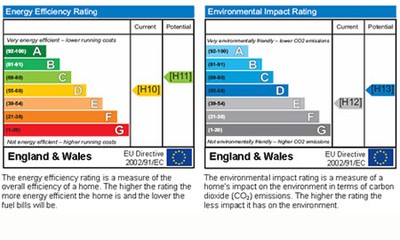Green credentials
I had a request today, to explain how the following 'Green Credentials' (Environmental Measures etc.) incorporated in a huge London residential development are benefial, not only from an evironmental point of view, but also financially and in terms of general lifestyle enhancement.
Here is my response;
Sedum roofs (usually known as green roofs) are beneficial because a) you have either increased the vegetation if the development was built in a cityscape or b) you have not reduced the vegetation if the development was built on a green site (by sticking the greenery back on the roof). The reason why this is good is that a) plants and all living organisms absorb CO2 from the environment as they grow, through the natural process of photosynthesis, making up for some of the CO2 that is emitted from all our energy consumption. And b) the planted area absorbs rain water which prevents flooding. If the development is built on a green site and no green roof was implemented or additional plans were planted, then you would have to design in water attenuation measures to manage the flood water. Additionally, it looks nice and can provide a garden / usable outdoor space in an otherwise crowded concrete jungle.
CHP units are mainly beneficial from an environmental point of view, i.e. they waste less energy but this always has the consequential financial benefit of reducing running costs which always makes the occupants happy.
Code of sustainable homes level 3 (with aspirations of reaching level 4) Code level 4 is quite difficult to achieve, meaning that you really have gone above and beyond good practice measures with regards to environmental design, such as specifying products with low water consumption. Even level 3 is a good achievement. Let me know if you would like more examples from CSH (the Code for Sustainable Homes).
Generally energy efficiency rating of B (all units). If you mean an EPC rating of B? Then yes, this is good. The EPC (energy performance certificate) ranges from A (good) to G (bad) so a B is high. A is generally quite difficult to achieve without some sort of renewables (wind, solar power etc.) A+ means the building is not consuming energy, but instead generating energy(!) which is only possible to achieve by using renewable energy technologies that actually generate more energy in total than required by the building; enabling the excess to be sold back to the grid. (see example of a certificate in post below).
Generally environmental impact rating of A (all units) – Ok, looking at the image below (of both certificates next to each other), I think for residential buildings, the ‘energy efficiency rating’ relates to costs which means they are quite ‘cheap’ to run in terms of electricity bills etc. – in which case the ‘environmental impact rating’ is the energy consumption and hence CO2 emissions. I’d say that a B for en.eff. and an A for env.imp are both very good. See the text below the images.
Car free development (until block D is constructed) – reducing pollution and energy consumption by encouraging people to cycle and / or use public transport instead of their own cars. This also indirectly improves the health / fitness of the occupants.
Promoting the use of cycles with minimum of 1 cycle space per unit – under the schemes and energy assessment methods I am working on (BRREAM etc.) you get credits for increasing the number of cycle spaces and credits for reducing the amount of car parking spaces. It is all to encourage cycling, which reduces pollution and energy consumption from cars + improves the health / fitness of the occupants through exercise.
Car Club – This probably means they have set up a car sharing scheme, meaning that maybe 3 or 4 people who live / work close to each other take it in turns to give the others a lift, rather than using 1 car per person, saving a lot of energy and reducing pollution. This of course has huge financial and environmental benefits, due to the amounts of fuel (petrol) they are saving.
Recycling facilities within kitchens – they have probably installed separate bins for paper/plastic/glass/ cans and probably a compost too which is great. Recycling means saving energy from not having to produce new products from virgin materials and of course preserves the world’s natural resources. Furthermore, it prevents this waste from going to landfill. Landfill sites are very bad for the environment because they a) take up space that could otherwise have been used for new developments and b) emit methane gas (CH4) into the environment which is bad (dangerous) and also prevents developments to be built in a whole surrounding area of these landfill sites (not just on the actual site).
